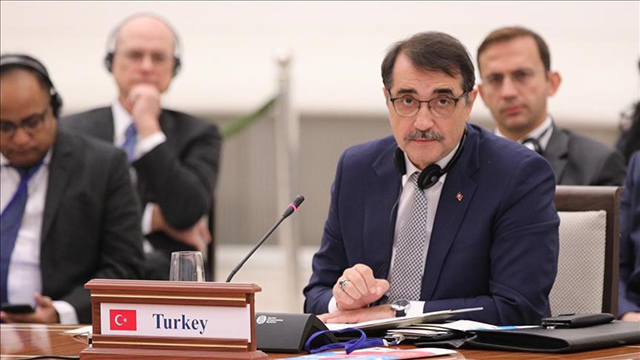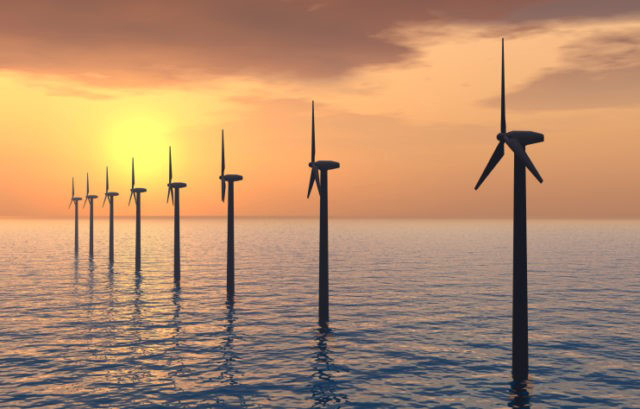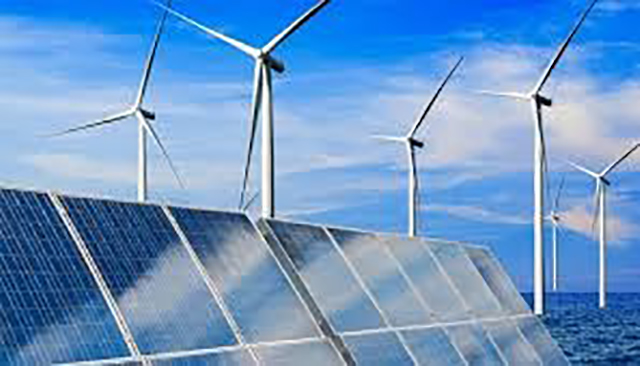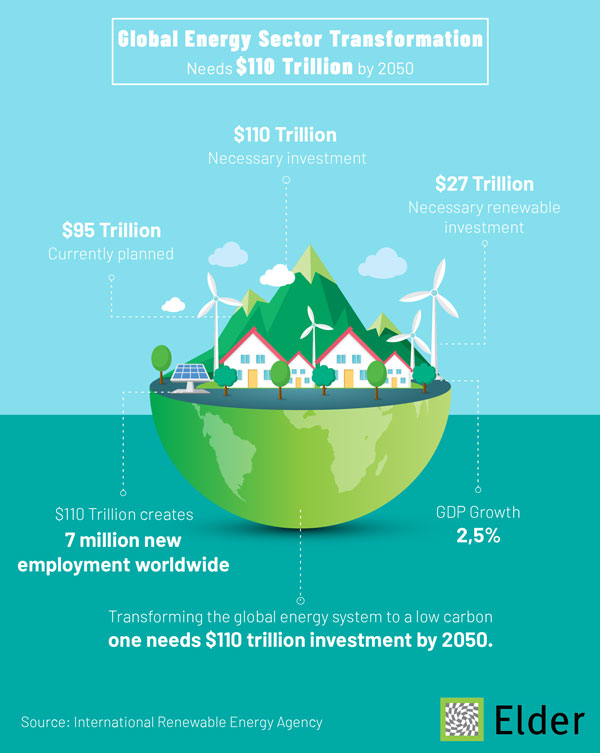
Turkey and Russia's bilateral relationship has been elevated through long-term cooperation projects including the TurkStream natural gas pipeline project, and the Akkuyu Nuclear Power Plant, Fatih Donmez, Turkey's energy and natural resources minister said on Wednesday.
During the Global Challenges and Trends in Renewable Energy Development session at Russian Energy Week conference in Russian capital Moscow, Donmez commended this cooperation that he said reflects both countries' mutual trust and understanding.
Both the TurkStream natural gas pipeline project and the Trans-Anatolian Natural Gas Pipeline (TANAP) have formed the backbone of Turkey's regional energy politics. These projects have enhanced energy supply security of Turkey and Europe through both route and supply diversification, he said.
He referred to the global energy sector's transition which he explained was not just based on economics or politics but which is also influenced by new technologies.
Accordingly, he said in order to move from conventional energy resources, new regulations, policies, financing models, including tariff mechanisms and offer guarantees, have a vital role to play in this evolution.
At the heart of this transition for Turkey, energy sources like nuclear, natural gas, coal and renewables will be on the agenda, Donmez noted.
Renewables, in particular, have become much cheaper compared with other sources of electricity generation with more competitive set-up costs in installation, equipment and infrastructure while also providing greater efficiency, he said.
"I believe this trend will continue in the near future, specifically for solar technology. The fall in the cost of electricity from renewables has transformed the choice of many policymakers," he said.
Nonetheless, he added that although renewable energy sources have made great progress in recent years, they still face major challenges.
"Some are associated with various renewable energy technologies, and others are due to factors such as undeveloped market conditions, inconsistent regulations and insufficient infrastructure. Therefore, a successful system integration and the energy sector transformation towards higher shares of renewable energy will be of utmost importance for policymakers." he explained.
Donmez emphasized that Turkey's energy sector has been in transition since 2002, when it initiated the liberalization of its energy markets.
"Being an emerging economy and a key country in its region, Turkey's energy sector can be characterized by two factors: rapid demand growth and import dependency," he said.
As a result, he explained that one of Turkey's top priorities is to decrease its import dependency by improving security of supply and by maximizing renewable energy sources.
He said that Turkey aims at increasing the share of the domestic and renewable energy up to two thirds of the electricity production by 2023.
Since 2002, Turkey's installed capacity has grown from 32 gigawatts (GW) to 91 GW with 49% of this additional capacity based on renewables.
The second phase of the country's transformation was launched in 2017 with the National Energy and Mining Policy to become more self-sufficient, promote renewables and ramp up local resource utilization.
Donmez said that Turkey’s goal is to develop 10 GW of additional capacity in solar and wind energy each by 2026 compared to 2016.
"Ensuring security of supply, localization and predictable market conditions are the main pillars of this policy. Renewable energy emerges as an integral element cross-cutting these three pillars. Localization is also one of the vital pillars of our strategy," he explained.
Through Turkey's newly-established Renewable Energy Zone model, he said the country is prioritizing the local supply chain and transfer of technology through this tender mechanism.
He explained that in this context, competitive tenders of 1 GW for mega projects for each solar PV and wind energy generation plants were organized in 2017. In May, tenders for 1 GW capacity of wind were successfully initiated and new projects for renewable energy will be launched in 2020.
"As part of the localization pillar of our policy, other domestic sources such as coal still retain a significant portion in meeting growing energy demand in parallel with the global trend," he said.
However, he detailed that clean coal technologies should be supported with new research and development and to this end, he said Turkey would initiate a model similar to renewable tenders for clean coal technologies.
"We are committed to benefiting from our country's huge coal reserves in compliance with environmental regulations," he said.
He hailed the progress achieved to date in projects that have contributed to peach and stability.
"In light of the progress we have achieved, I can clearly say that despite all geopolitical tensions and difficulties, Turkey has achieved a regulatory framework with a transparent and competitive market structure, and has taken steps to promote private sector investments.
"Political stability and good governance have eased the movements of private sector investments in the field of energy so Turkey can continue to be a safe harbor and a leading actor in its region for investments," he said.
Source: AA

The European Bank for Reconstruction and Development (EBRD) is preparing to introduce a new energy efficiency finance model for Turkey’s public sector that will fund energy performance companies (EPCs) who will collaborate for energy savings with the public institutions, Turkey’s deputy head at the EBRD told Anadolu Agency on Friday.
The bank will provide loans to the EPCs who are tasked with guaranteeing a prescribed degree of savings resulting from these efficiency investments in public institutions, Sule Kilic, deputy head for Turkey at the EBRD explained.
The EBRD’s five-year strategy for Turkey, announced two weeks ago to mark the 10th year of the bank’s operations in the country, centers on energy efficiency investments, along with renewables. The bank has already funded 3 gigawatts of installed capacity in wind, solar and geothermal projects -- equivalent to 7% of the total installed renewable capacity across Turkey.
Turkey’s National Energy Efficiency Action Plan, launched by Turkey's Energy and Natural Resources Ministry in early 2018, outlines a roadmap targeting savings of $ 30.2 billion by 2030 by investing $ 10.9 billion in a several different sectors, especially in the industrial and construction sectors.
Kilic highlighted that public institutions have a very high potential for savings as part of this plan.
To benefit from funding, Turkey's Energy and Natural Resources Ministry asked that public buildings, whose energy consumption exceeds 250 tons of oil equivalent, calculate the buildings’ average consumption and monetary value in 2016, 2017 and 2018 and submit the findings to the energy ministry by March 2020.
The buildings will need to save at least 15% from January 2020 to December 2023 compared to the calculated average consumption of the building in 2016, 2017 and 2018.
"If we take the example of a heating or electricity bill of a public building; the EPC will make all the necessary efficiency investments for the building with the loan provided from the bank [EBRD]. The public institution and the EPC will make a contract, part of which will involve the EPC’s guarantee of a savings amount each month. However, the public institution will pay this savings amount to the EPC to repay the loan," she explained.
The new finance model, which is already in use in Europe and other countries, will be the first time it is executed in Turkey.
"We can define this as a new model of public-private collaboration in energy efficiency investments," Kilic said.
However, to launch it in the country, some legislative amendments are required so public institutions are allowed to make such contracts with the EPCs.
She explained that the contract between the EPCs and the respective public institution will run for an agreed period, say five years, during which time the public institution will fully pay off the loan monthly, avoiding the need for an upfront repayment from public funds.
She also stated that when put into practice; a new market would arise for EPCs.
Kilic said the another new model could be applied to Turkey’s underground gas storage facilities, which are critical to the country’s energy security.
The EBRD no longer funds carbon projects but could focus on a financial mechanism for floating liquefied natural gas (LNG) and regasification units (FSRU) in Turkey, she said.
As the public sector cannot make all the necessary investments, she explained that some private sector players are planning to build the much-needed underground gas storage facilities, which would enhance energy security, would allow more competitive prices and eliminate dependency on long-term gas contracts.
She suggested that the role of Turkey’s Petroleum Pipeline Company (BOTAS) would be pivotal for the success of such a finance model.
"To be able to finance the private sector players planning to invest in gas storage or FSRUs, BOTAS should guarantee them the use of a certain capacity of their storage so they can earn and repay the loans," Kilic explained.
Turkey, with around 50 billion cubic meters (bcm) of annual natural gas consumption, plans to have a storage capacity of 11 bcm thanks to the investments from BOTAS.
Source: AA

Britain’s homes are set to be powered by the world’s largest wind turbines towering 853ft tall with blades that extend 351ft.
The futuristic turbines will be built on Dogger Bank Wind Farms, an artificial island 130 km off the coast of Yorkshire in the North Sea.
The turbines will be able to power 4.5 million homes a year – the equivalent to 5 per cent of the UK’s electricity generation.
The Haliade-X turbines – which have been developed by Paris-based company GE Renewable Energy – will be connected by electricity cables to the UK, Norway, the Netherlands, Germany, Denmark and Belgium.
Developers say a single turbine can power 16,000 homes, making it one of the most efficient models in the world.
Construction is set to begin in early 2020 with the first electricity to be produced in 2023.
Dogger Bank is set to be the largest wind farm in the world with a combined capacity of 3.6 GW.
John Lavelle, president and CEO of the offshore wind arm of GE Renewable Energy, said: “We have an important role to play in the UK’s offshore wind ambitions and in delivering further carbon emission reductions.
“Our Haliade-X technology is helping our customers to make offshore wind a more competitive source of clean and renewable energy.”
Source: Independent

Europe’s biggest producer of carbon dioxide emissions has pledged to become carbon neutral by 2040. The move by RWE highlights the radical transformation of the German utility, which has long been one of the prime targets of climate activists and that currently runs some of the largest and dirtiest coal power stations on the continent.
“Today begins the era of the new RWE,” said Rolf Martin Schmitz, chief executive, at an event in Essen to present the group’s plans. “Every energy has its time. Now comes the era of renewables.”
The pledge comes just weeks after European regulators signed off on a €43bn asset swap deal between RWE and its rival Eon that will reorder the German energy market. Under the terms of the 2018 deal, RWE will take over all the renewables assets of both Eon and Innogy, an RWE subsidiary that will be acquired by Eon.
The transaction will make RWE the third-largest renewables group in Europe, and the second-largest in the market for offshore wind power. RWE has said it plans to invest €1.5bn a year in additional renewables capacity. However, to meet its climate goal, RWE will have to shutter all its conventional power stations over the next two decades.
In Germany, the group’s home market, the government has already announced that it wants all coal power stations to close by 2038 at the latest — two years ahead of the RWE target.
According to Mr Schmitz, that still leaves the challenge of how to replace the group’s gas-powered stations: “We think this [2040 target] is more than ambitious,” he said. Environmental campaigners, however, were unimpressed. “RWE is trying to sell the inevitable as climate protection,” said Karsten Smid, an energy expert at Greenpeace. “European climate goals and the growing efficiency of renewables mean that the last coal power station will have to be closed long before 2040.”
To make a real contribution to the fight against climate change, Mr Smid added, RWE should agree to close down all its coal power stations by 2030.
RWE has long been among the top targets of climate activists, in part as a result of a long-running, high-profile battle to preserve a forest in western Germany that is threatened by the planned expansion of one of the group’s lignite mines. RWE also operates some of the largest coal-fired power stations in all of Europe. According to a study by Carbon Market Data, which is based on data from the EU emissions trading system, RWE was the largest producer of CO2 emissions in Europe last year.
Speaking on Monday, Mr Schmitz insisted that RWE had made important strides already in its effort to lower carbon emissions. “Between 2012 an 2018 we reduced CO2 emissions at RWE by 60m tonnes. That is a cut of a third, and is equivalent to the annual CO2 emissions of 30m cars,” he said. RWE plans to lower carbon emissions by 70 per cent by 2030, compared with 2012 levels.
Source: Financial Times

Annual revenue generation within the global commercial and industrial energy as a service market is set to reach $ 278 billion by 2028.
William Tokash, a senior research analyst with Navigant Research said: “A full set of EaaS solutions with financing options will increasingly be required to address the portfolio needs of C&I customers, with energy storage and smart building analytics and controls as key enabling technologies.
“The rise of these new financing instruments will form the foundation of the delivery of new EaaS vendor business models.” Factors including transcending single-site, fee-for-service energy efficiency projects requiring customer CAPEX, a variety of new solutions, transaction financing instruments, and business model options will drive an increase in the adoption of energy as a service market.
The largest region for commercial and industrial energy as a service market is expected to be Asia Pacific owing to the emergence of competitive supply in China and the growth of distributed solar PV are expected create new onsite energy supply options.
Source: Smart Energy International
Hydrogen: A Renewable Energy Perspective
Hydrogen has emerged as an important part of the clean energy mix needed to ensure a sustainable future. Falling costs for hydrogen produced with renewable energy, combined with the urgency of cutting greenhouse-gas emissions, has given clean hydrogen unprecedented political and business momentum.
This paper from the International Renewable Energy Agency (IRENA) examines the potential of hydrogen fuel for hard-to-decarbonise energy uses, including energy-intensive industries, trucks, aviation, shipping and heating applications. But the decarbonisation impact depends on how hydrogen is produced.
Please click here to read the full report.
Turkey Energy Summit
October 06 - 08 / Antalya
12th Energy Storage Forum
October 08 - 10 / Rome
8th Turkish Wind Energy Congress
November 05 - 06 / Ankara
12. International Energy Congress- EIF
November 06 - 08 / Ankara
European Utility Week
November 12 - 14 / Paris
1. International Energy Summit 2019
November 21 - 24 / Antalya

